Energy efficiency is at the heart of modern heating systems. By focusing on efficient installations, homeowners can enjoy the benefits of improved performance and reduced energy costs. A thoughtfully designed system not only provides consistent comfort but also aligns with environmentally friendly objectives. To achieve these goals, understanding the key elements of efficient heating systems and installation practices is essential.
1. Understanding Energy-Efficient Heating Systems
Exploring Energy Efficiency
Energy-efficient heating systems conserve energy and reduce utility costs. These systems are designed to provide maximum heat output with minimum energy input. Efficiency levels are determined by the ratio of energy converted into heat. Systems with high efficiency ratings are often labeled with certifications to assure consumers of their performance.
Types and Benefits of Efficient Heating Systems
Several types of heating systems are known for their energy efficiency:
– Condensing Boilers: Capture more heat from the exhaust gases and convert it to usable heat, providing higher efficiency.
– Heat Pumps: Transfer heat rather than generating it, allowing them to provide both heating and cooling efficiently.
– Radiant Heating: Distributes heat evenly by warming floors and ceilings, enhancing comfort and reducing energy waste.
The primary benefits of efficient heating systems include lower energy bills, reduced environmental impact, and increased home comfort. By choosing energy-efficient options, homeowners can enjoy long-term savings and contribute positively to the environment.
2. Key Considerations for Heating System Installations
Factors Influencing Installation Efficiency
When planning a heating system installation, several factors significantly affect energy efficiency:
– Proper Sizing: Undersized systems struggle to heat adequately, while oversized ones waste energy. Accurate load calculations ensure the system matches the home’s heating needs.
– Placement: Optimum placement minimizes energy loss. Systems should be installed in locations that facilitate easy heat distribution.
– Quality of Installation: Skilled professionals ensure that systems are set up correctly, reducing potential energy loss.
Role of Insulation and Ductwork
Insulation and ductwork are vital components in maximizing heating system efficiency. Effective insulation prevents heat escape, keeping energy usage and costs low. Additionally, well-sealed ductwork enhances airflow, ensuring that the heated air reaches the intended areas without loss. Investing in these aspects makes a marked difference in overall home heating efficiency, conserving energy and reducing expenditures.
3. Selection of the Right Equipment and Materials
Choosing the Right Furnace or Boiler
Selecting a high-efficiency furnace or boiler requires attention to several criteria. It is essential to look for models with the highest Annual Fuel Utilization Efficiency (AFUE) ratings. These ratings indicate how efficiently a unit converts fuel into heat. Models with higher ratings offer better performance and energy savings.
Consider models with variable speed motors and two-stage burners. These features allow the system to adjust to the home’s heating needs, providing more consistent temperatures and using less energy. Sealed combustion furnaces, which draw air from outside, can enhance efficiency by preventing heat loss from the building’s interior.
Energy-Efficient Materials and Technologies
Advanced materials and technologies play a significant role in maximizing heating system efficiency. Smart thermostats help regulate home temperatures more precisely, reducing wasted energy. They use sensors and Wi-Fi to optimize temperature settings based on occupancy patterns.
High-quality insulation materials, such as spray foam or reflective barriers, augment the overall efficiency by minimizing thermal losses. Additionally, utilizing well-designed duct systems built with durable, high-performance materials ensures that warm air is effectively distributed throughout your home.
4. Expert Tips for Installing and Maintaining Efficiency
Step-by-Step Installation Guide
A successful heating system installation requires a few essential steps:
1. Assessment and Planning: Have our professionals evaluate your home’s heating requirements to determine the appropriate system type and size.
2. Proper Sizing: Ensure that equipment is correctly sized based on precise measurements and load calculations to avoid inefficiency.
3. Strategic Placement: Locate the system where it can operate optimally without obstruction, allowing for effective heat distribution.
4. Sealing and Insulation: Ensure ducts, vents, and other components are well-insulated and sealed to prevent air leakage.
5. Calibration: Utilize a qualified technician to calibrate settings such as pressure and airflow for optimal performance.
Maintenance Practices for Sustained Efficiency
Ongoing maintenance is key to preserving energy efficiency. Regular furnace tune-ups and inspections by our professionals are critical. These should include checking thermostats, inspecting electrical connections, and cleaning components to ensure they are not impeded by dust or debris.
Pay attention to changing filters regularly to enhance air quality and system efficiency. Inspecting and servicing ductwork can help address any potential leaks or blockages. These habitual checks extend the lifespan of your heating system and maintain energy efficiency throughout its operation.
Let Professionals Handle Your Heating Installation Needs
Ensuring energy efficiency in heating systems is an ongoing process that begins with selecting the right equipment and executing a thoughtful installation. By understanding the intricacies of furnace and boiler systems, and committing to regular maintenance, homeowners can enjoy enhanced home comfort and reduced utility costs. Proper planning and execution, alongside guidance from experienced professionals, make a substantial difference in achieving energy savings and environmental benefits.
For those considering a new heating system or seeking to maximize their existing one’s efficiency, the right expertise is invaluable. Our team at Burkhardt Heating, Cooling, Plumbing & Electric is ready to assist with expertly executed heating installation in Hales Corners. Our skilled technicians ensure your systems perform at their best, providing you with warmth and savings. Reach out today to optimize your home’s comfort and efficiency with our trusted services.











